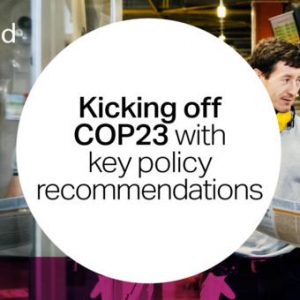 The World Business Council for Sustainable Development and ASU LightWorks® believe that carbon pricing is one of the most efficient means of driving the transition to a low-carbon world. As an increasing number of jurisdictions have adopted – or are considering adopting – carbon pricing, a recent document by the WBCSD focuses on the “what” and “how” rather than the “why.”
The World Business Council for Sustainable Development and ASU LightWorks® believe that carbon pricing is one of the most efficient means of driving the transition to a low-carbon world. As an increasing number of jurisdictions have adopted – or are considering adopting – carbon pricing, a recent document by the WBCSD focuses on the “what” and “how” rather than the “why.”
The WBCSD released the document in hopes of stimulating discussions between policymakers and business leaders on how best to implement the carbon price so that it can incentivize low-carbon innovation and investment, create a global level playing field and support the attainment of the UNFCCC 2°C goal in a sustainable way.
In summary, carbon pricing is a monetary cost put on the emission of carbon dioxide into the atmosphere. It must be implemented by governments through legislation. Despite significant progress made with the Paris Agreement, the need to bring emissions to net-zero later this century is not yet reflected in the overall transition picture. Investments and energy system turnover guided by a carbon price can help reach net-zero emissions globally over the course of this century. The higher and more pervasive that price becomes, the earlier net-zero emissions can be reached, and therefore, it becomes more likely that the ambition of the Paris Agreement can be achieved. There are four primary ways in which carbon pricing can be implemented:- Cap-and-trade system where the desired environmental outcomes, expressed as a cap, are translated into allowances. The emitter is obligated to surrender one allowance for each ton of CO2 emitted.
- Carbon tax where the government imposes a fixed tax on CO2 emissions.
- Baseline and credit approach that sets a baseline emission for each sector. The participants earn credits by exceeding the baseline, or surrender credits if they fall short. The credits are tradeable and can be banked, as in the cap-and-trade approach.
- Project mechanism for crediting purposes where projects are developed and emissions are compared with a baseline. If the project emission reductions are better than the baseline, tradeable credits are issued and may be bought directly by governments or used as compliance instruments in cap-and-trade systems.